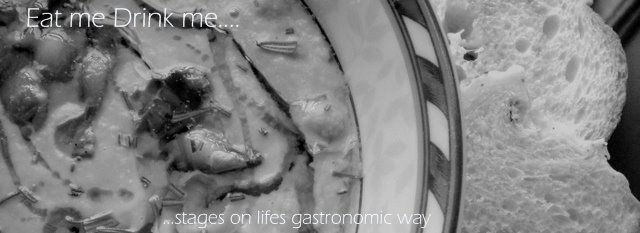So, to begin with...
Insalata Caprese. A classic, simple, typically Italian dish. And this is its essence, and the essence of good Italian cuisine. God, and the devil, are in the ingredients.
My recipe comes from Carluccio (Complete Italian Food), a flatmate, and experience. I buy my Mozzarella di Bufala from The Best of Italy in Dublin 6. They have several excellent varieties. I buy whichever authentic one they happen to have in stock at the time (it will have a D.O.C. or D.O.P. mark on the packaging. don't buy one without this.) This is essential. It must be Bufala, it must be from South Italy, and it must be properly made - when you slice it, the interior will be quite rough and textured, and it will tend to fall apart very easily. The cut interior should resemble an onion. Liquid should seep out from the cut cheese. Taste the cheese. If it your first time tasting real Mozzarella, it should be surprising. The exterior should have no signs of discolouring - no yellowing. (A yellow cheese is too old to eat. It will smell and taste slightly rancid. Bring it back to the shop and shout a lot. Call the owner a thief. Read the link below to bone up on useful facts to hurl at the swindler behind the counter.) This is the sign of a quality mozzarella. Handmade. With pure buffalo milk. And fresh. As fresh as you can get. A quick guide to what to look for in good mozzarella is here.
The taste is rich - almost too rich, creamy, milky. The other essential ingredients are ripe, large tomatoes. Coming from Ireland, I have to compromise on these - they should be juicy plump, heavy and grown outdoors - the skins sometimes scarred slightly from cold weather. I buy the best ones I can find from our cold climate. Which means I often buy Spanish or Italian.
A good quality extra virgin olive oil. My kitchen standard is De Cecco Extra Virgin . But buy the best you can afford. I had an olive oil habit. And DeCecco is my attempt to control it. Finally, fresh Basil leaves, torn roughly by hand, freshly milled black pepper, and good quality sea salt - I've used everything from Fleur De Sel from Camargue, to Maldon Sea Salt, to cheaper Schwarz Mediterranean sea salt. At the very least, do not use table salt here.
Slice the mozzarella - ideally straight from the fridge. It gets very difficult to handle if it warms up. Chunky is better - good quality cheese will be too difficult to handle if too thin. Again, slice the whole tomatoes - I tend to go chunky here too. On a clean plate, arrange the tomatoes and mozzarella according to your aesthetic. I tend to favour making an outer ring on the plate, layering one slice of tomato on top of one slice of mozzarella and continue all the way around, and putting the bread in the centre. Drizzle with olive oil, and then sprinkle the torn basil leaves over from a height. Lightly season with salt and black pepper. Serve with slices of Italian or French bread - a good, non Cuisine de France baguette, sliced ciabatta, or a rustic country style bread. Serve immediately.
An alternative preparation is to cut the tomatoes in advance and let them drain in a plastic colander or sieve, or just on a plate - a lot of juice drains off, meaning your caprese can be left standing for a while longer. A friend from Frosinone, instead of doing this, cuts up baguette and studs the plate with small rounds before serving, and leaves the plate for 20 minutes before serving, to allow the bread to soak up the juices. Then he redrizzles with oil and serves.
Simple. Uncomplicated. And emblematic of Italian cooking. It takes ten minutes to plate an authentic taste of the south of Italy. The effort here is more in sourcing the right ingredients than improving them in any sense. And thus, from simplicity, comes excellence.
Friday, March 23, 2007
Subscribe to:
Post Comments (Atom)

No comments:
Post a Comment